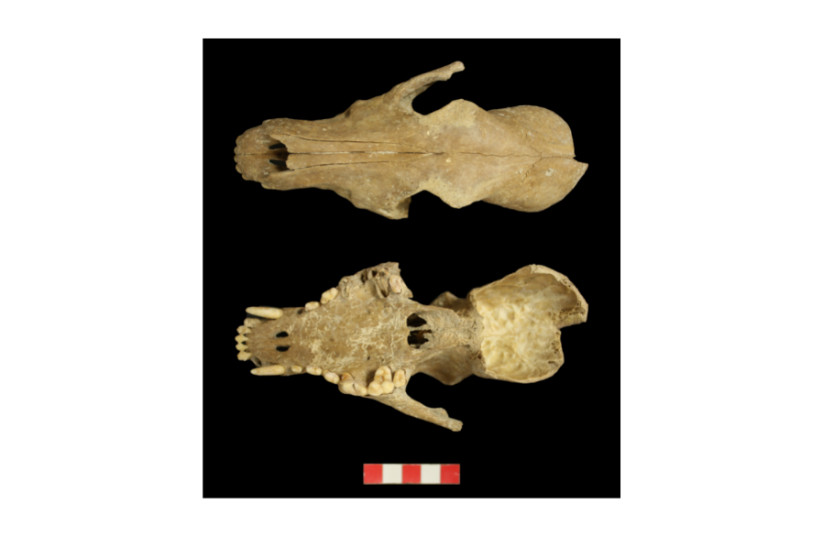Somewhere in the early lineage of ancient dogs from the Iberian Peninsula and the area of modern-day Israel, there was a common maternal ancestor.
This was among the findings of a wide-ranging study of early human-dog relations by an international, multi-disciplinary group of investigators who scientifically profiled Iberian dogs from the Chalcolithic Period some 5,000 years ago.
“That means that in an earlier period than our Chalcolithic dogs and the Israel dogs, there was a dog some of whose descendants went to Israel and others to Iberia,” said Ludmilla Blaschikoff, a researcher from the CIBIO Research Center in Biodiversity and Genetic Resources of the University of Porto, Vairao, Portugal.
The research group – which included zooarchaeologists, biologists, and a veterinarian – collected and analyzed data including DNA from bones and teeth of ancient dogs worldwide. After creating an evolutionary development tree for the maternal lineage – using what is call the mitochondrial DNA – they found that the Iberian Chalcolithic dogs were genetically grouped near to the ancient dogs from Neolithic Israel as well as from Late Neolithic Ireland and Late Neolithic Spain, said Blaschikoff. However there is no way of knowing yet where that ancestor originated, she noted.
Interestingly she said, out of four of the DNA variations which tend to be inherited together – called haplogroups – that characterize matrilineages of modern Portuguese dogs, two already existed in the Chalcolithic dogs.


Researchers Arantxa Daza-Perea, João Requicha, Cleia Detry and Ana Elisabete Pires were among those who co-authored the report which was recently published in the Journal of Archaeological Science.
The researchers said their study documenting some of the characteristics of Iberian dogs during the Chalcolithic period will aid in the understanding of human interests in their maintenance and breeding.
By radiographing some of the ancient canine teeth, they were also able to calculate the approximate age at the time of the dog’s death, said the researchers, concluding that the animals died young.
The researchers also determined with their analysis that the dogs varied in size, based on their shoulder heights. This, combined with the genetic diversity they found in the dog DNA specimens, indicates that Chalcolithic dogs could have been maintained, bred and selected for specific purposes, such as with livestock husbandry practices and hunting in this early period, they said.
Previous studies have shown such diversification of body characteristics, speculated to have come about through human-driven selection, mainly during the Roman Period, they noted.
“In addition, the documented presence of some dogs buried in places of special symbolic relevance and in connection with human burials, reflects the important social role this species played in these human communities,” they wrote.
Even then, not all dogs were treated equally, they added, with some being given special attention in burial, perhaps pointing to an emotional connection or a belief in a special role they played in the afterlife, while others were found buried among the garbage of the human settlements.
“Sacrifice of dogs is documented and probably took place when the community wanted to bury dogs with a deceased human,” said Blaschikoff.
The researchers hope to extend their study to earlier periods to trace back genomic markers related to the domestication process and also reconstruct the paternal genetic lineage.
